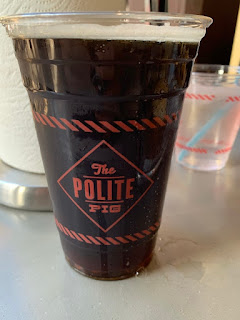
I love superheroes!
I love Marvel movies! I loved them before they were cool like broadcast poorly produced Spider-Man movies from the 70s love! And I remember sitting in a theater watching the end credits scene of Iron Man where I saw Nick Fury enter the frame and blow my mind with promises of what could happen next!
And I love history, hence an entire section of this site that is really just an index of books, mostly history. Clearly, MCU: The Reign of Marvel Studios was written literally for me!
MCU: The Reign of Marvel Studios by Joanna Robinson, Dave Gonzales, and Gavin Edwards is a complete and thorough history of Marvel Studios’ projects before its founding in August 1996 under the guidance of Avi Arad. The book outlines how a scrappy studio with a lot of intellectual property and a mission to sell toys, started mainly by leasing characters to other studios and providing some oversight largely to support toy sales. But with 1996 and the coming of Marvel Studios, Marvel looked to make movies itself. Armed with incomplete ownership of their character roster, leadership with a vision, and taking a big bet on itself, the Studio found near-instant success in 2008’s Iron Man. This movie launched the true beginning of the Marvel Cinematic Universe, a massive storytelling endeavor under the watchful eye of Kevin Feige. The book details how Marvel Studios came to be, its sudden successes, the long-form storytelling and, the the more recent critical and financial setbacks that the Studio has seen in the 2020s.
MCU: The Reign of Marvel Studios is deep and wide when it comes to telling the story of Marvel Studios. It is clear writing, despite often detailing complex situations including contracts, legal cases, and personalities. You will not find a more complete one-volume history of Marvel Studios. But that being said, I did often feel like its major accomplishment was bringing together a lot of content in one title and not adding to what fans know about this Disney intellectual properly machine. However, bringing it all together in one read does help refine thoughts on specific themes.
One example that emerges to readers really early is the belief of Marvel Chief Executive Officer Ike Pearlmutter that the purpose of Marvel Studios was to sell toys. Therefore, decisions about the movies supported this belief. This does make sense when you consider that Pearlmutter came from the toy background, not the comics or publishing industries. Therefore, the guidance or interference from Pearlmutter and the Marvel Creative Committee, largely under his influence, looked to support his thoughts on toy sales. And the belief was when you wanted to sell a lot of toys, white male characters sold, not diverse heroes and villains. This drama can seen played out in the characters of Black Widow and Gamora, often hidden in the associated toy lines. This belief would be opposed by Fiege and Disney’s CEO Bob Iger who supported diversity and larger storytelling. While it’s clear that Fiege and Iger found Pearlmutter to be a difficult personality, you can also see how the creative and business beliefs only further pushed this split wider. It is also interesting to watch as the Creative Committee, largely built to act like a Pixar Brain Trust failed to support creativity despite having some talented storytellers included. In the end, the call for toys may have drowned out their voices.
Another emerging theme is how Marvel Studios has strayed from its roots. I don’t mean plausibility, a quality that Jon Favreau sought in the production of Iron Man. Instead they have lost the jazz, the inability for directors, writers, and actors to improv and creatively flex their muscles as productions were in progress. This supported a Fiege principle that the movie mattered more than the whole. But with decades of movies completed and years more in production, the role of Fiege to channel movies and TV to movie together has increased, and play by creative forces now must be limited. Fiege’s role in holding it all together is essential to this endeavor. But it also has the price of limiting creative freedom. Additionally, expensive special effects while visually stunning has blocked the ability to run with a discovered story angle.
You like superheroes and the Marvel Cinematic Universe. Then MCU: The Reign of Marvel Studios by Joanna Robinson, Dave Gonzales, and Gavin Edwards is for you. The book is a complete history with many themes for readers to dive into, with me just skimming a few. The book ends in the recent past, with the future of the MCU at a potential crossroads as real-life legal events have led to a requirement to change story plans, economics have changed the movie and television business, and the MCU has had creative missteps, (I found Secret Invasion to be a giant meh). Maybe someday an expanded or revised volume will detail what comes next. But for now, MCU: The Reign of Marvel Studios provides fans with a handbook of creative achievement and a record of how we got to this enormous financial and creative success…despite itself!
This post contains affiliate
links, which means that Between Disney receives a percentage of sales
purchased through links on this site.




